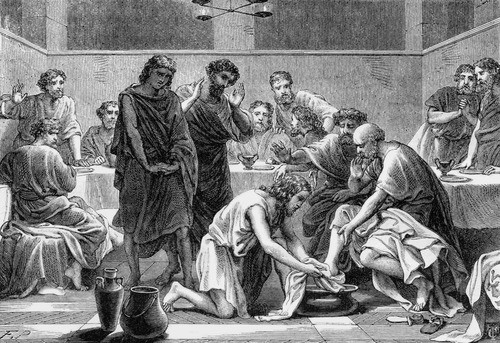 Some people speak of getting back to what the first church experienced. I think most of that talk is idyllic nostalgia. It's not based in reality, nor is it biblically sound.
Some people speak of getting back to what the first church experienced. I think most of that talk is idyllic nostalgia. It's not based in reality, nor is it biblically sound.
I learned long ago, you can't go back to what was once before. Think of all those time-travel stories. It never works out well, things are always different. It's also not how God chooses to move by His Spirit. God desires to do something new, not remade or revisited.
But there is one thing we can go back to—the example of Jesus. After all, He is our prime example. On the night He was betrayed, He gave us a valuable example of His leadership style, and made it clear we are to follow this example.
More than washing feet
The story of Jesus washing the feet of His followers is full of great truths to teach. It is not just about washing one another's feet, although foot-washing services can be meaningful.
The primary focus of this story, in John 13:1-17, is the Lord's example of servant-leadership. It was a role He demonstrated throughout His life and public ministry, but this was not discerned too well by His disciples (Luke 22:24-27).
If you want to raise up a Timothy, a son or daughter in the faith, it should not be based on a pattern or curriculum or theological theory. It needs to be based on the example of Jesus.
He poured Himself into twelve men whom He chose as His foundation for the church. One would betray Him. All would deny Him, until they were empowered with the Spirit of God, after Jesus' resurrection.
Servant-Leadership as seen in John 13:1-17
Here are five characteristics and ways a true servant-leader leads. These are qualities and roles of leadership seen in Jesus. In John 13, as He washes the disciples feet, we see His example of confident, yet humble leadership.
This is our model. This is our only pattern, not clever leadership strategies designed by men.
Last week I posed a question—Pastor, where's your Timothy? This is a simple answer to that question.
Know the Way (v 1, 3)
We see the Lord’s confidence in knowing who He was as God’s Son, where He came from, and where He was going. Our confidence is not to be in ourselves, nor our abilities. Our confidence is based on the Lord and who He has called us to be in our relationship with Him.
Knowing the way for us is to deny ourselves, take up the cross, and follow Jesus (Mt 16:24), and be guided by the Holy Spirit (Rom 8:14). This is how we are to live and lead until we see Jesus face to face.
[bctt tweet="Our confidence is not to be in ourselves or abilities, but in the Lord"]
Walk the Way (v 4-5)
By far, the most common and important element of true servant-leadership is being a living example. This, of course, is the picture we have of Jesus as He washes the disciples feet.
This is not unusual, but seen throughout Jesus' leadership and training of the disciples. Example was always an essential element of His leadership.
[bctt tweet="Example was an essential element of Jesus' leadership"]
Show the Way (v 6-13)
This is simply an extension of walking the way, but moves beyond example to helping others see or know the way. How? By teaching and training in a personal and relational manner.
We see this in the dialog between Jesus and Peter, and in His instruction to all the disciples. This is not classroom or pulpit teaching, but a process of relational discipleship.
[bctt tweet="Genuine discipleship involves teaching and training in a personal, relational manner"]
Make a way (v 14-15)
An important part of leadership is training up new leaders. Again, it is not a program, but an intentional and relational process of discipleship. Discipleship done well naturally produces leaders.
The responsibility of leaders and mentors is to make a way for others to step up into leadership roles. It is often a matter of creating opportunities for others to move forward.
[bctt tweet="Discipleship done well naturally produces leaders, so make a way for them"]
Step away (v 16-17)
One of the more difficult roles of leadership is knowing when it’s time to move on or get out of the way. It's usually a matter of timing, but also the way in which a leader steps away.
Again, we look to Jesus as our prime example, but other examples are Barnabas (Acts 11:24-26), and Paul in the pastoral epistles. It requires self-denial on the leader’s part.
[bctt tweet="Knowing when to step back for other leaders to step up requires self-denial"]
The essential element
The essential element of servant-leadership is humility. This is the nature of our Lord Jesus (Matt 11:29; Phil 2:5-8), and it is essential for any leader to lead as Jesus did. Humility is important for mentoring others.
If you look closely at the life of Paul the apostle, you will see it, and Peter reminds all elders and young leaders of this too (1 Pet 5:5).
If you want to raise up a Timothy, someone who is able to lead others beyond your leadership, then know the way, walk the way, show the way, make a way, then step away.
Are you committed to intentional, relational discipleship? Are you ready to mentor someone? If so, follow the lead of Jesus.
This post is a follow-up to last week's post— Pastor, Where's Your Timothy?



